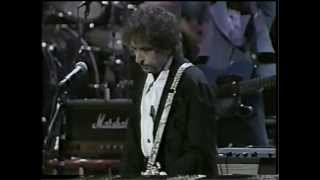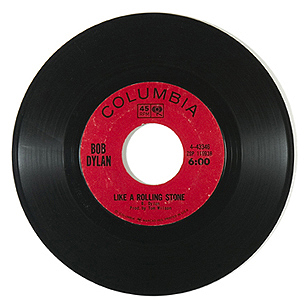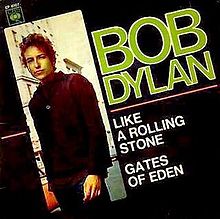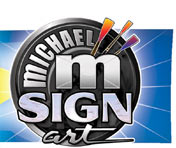| You are not logged in. | login to customize your own personal play list |
“Like a Rolling Stone” by Bob Dylan |
| United States Federal Trade Commission forbids anyone under 13 from viewing these music videos! |
| You are not logged in. | login to customize your own personal play list |
“Like a Rolling Stone” by Bob Dylan |
| United States Federal Trade Commission forbids anyone under 13 from viewing these music videos! |
 |
 |
 |
 |
You need Flash player 8+ and JavaScript enabled to view this video.
|
 |
 |
   |
 |

song info
 “Like a Rolling Stone” is a folk rock song recorded Bob Dylan. Song Title: Like a Rolling StoneArtist: Bob Dylan Album: Highway 61 Revisited Genre: folk rock, classic rock, folk Composer: Copyright © Bob Dylan Lead Vocals: Bob Dylan Lead Guitar: Mike Bloomfield (of Paul Butterfield Blues Band) (Telecaster) Rhythm Guitar: Bob Dylan Piano: Paul Griffin Organ: Al Kooper (Hammond) Bass: Russ Savakus Drums: Bobby Gregg Tambourine: Bruce Langhorne Harmonica: Bob Dylan Producer: Tom Wilson Recorded: June 15-16, 1965, Columbia Records Studio A, 799 Seventh Avenue, New York City, New York Released: July 20, 1965 Label: Columbia Rolling Stone Top 500: Like a Rolling Stone was selected number one (1) in Rolling Stone Magazine’s 500 Greatest Songs of All Time in May 2011. See Rolling Stone. Number of listens: 36877Current rank: 25 (updated weekly) Highest rank: 12 (play the video all the way through to register a vote for this song) Translations courtesy of Apple and Google. |
||
 |
Album: Highway 61 Revisited
genre: folk rock
label: Columbia
U.S. peak chart position: 3
U.K. peak chart position: 4

|
Number one (1) in Rolling Stone Magazine’s December 9, 2004 “500 Greatest Songs of All Time”.

Summary quotation from Wikipedia:
“Like a Rolling Stone” is a 1965 song by American singer-songwriter Bob Dylan. Its confrontational lyrics originate in an extended piece of verse Dylan wrote in June 1965, when he returned from a grueling tour of England, exhausted. After the lyrics were heavily edited, “Like a Rolling Stone” was recorded a few weeks later as part of the sessions for the forthcoming album Highway 61 Revisited. During a difficult two-day preproduction, Dylan struggled to find the essence of the song, which was demoed without success in 3/4 time. A breakthrough was made when it was tried in a rock music format, and rookie session musician Al Kooper improvised the organ riff for which the track is known. However, Columbia Records was unhappy with both the song’s length at over six minutes and its heavy electric sound, and was hesitant to release it. It was only when a month later a copy was leaked to a new popular music club and heard by influential DJs that the song was put out as a single. Although radio stations were reluctant to play such a long track, “Like a Rolling Stone” reached number two in the US charts and became a worldwide hit.
The track has been described as revolutionary in its combination of different musical elements, the youthful, cynical sound of Dylan’s voice, and the directness of the question in the chorus: “How does it feel?”. “Like a Rolling Stone” transformed Dylan’s career and is today considered one of the most influential compositions in post-war popular music and has since its release been both a music industry and popular culture milestone which elevated Dylan’s image to iconic. The song has been covered by numerous artists, varying from the Jimi Hendrix Experience, the Rolling Stones, the Wailers to Green Day.
Writing and recording
In the spring of 1965, returning from the tour of England documented in the film Don’t Look Back, Dylan was unhappy with the public’s expectations of him, as well as the direction his career was going, and seriously considered quitting the music business. In a 1966 Playboy interview, he described his dissatisfaction: “Last spring, I guess I was going to quit singing. I was very drained, and the way things were going, it was a very draggy situation … But ‘Like a Rolling Stone’ changed it all. I mean it was something that I myself could dig. It’s very tiring having other people tell you how much they dig you if you yourself don’t dig you.”
The basis of the song came from an extended piece of verse. In 1966, Dylan described the genesis of “Like a Rolling Stone” to journalist Jules Siegel:It was ten pages long. It wasn’t called anything, just a rhythm thing on paper all about my steady hatred directed at some point that was honest. In the end it wasn’t hatred, it was telling someone something they didn’t know, telling them they were lucky. Revenge, that’s a better word. I had never thought of it as a song, until one day I was at the piano, and on the paper it was singing, “How does it feel?” in a slow motion pace, in the utmost of slow motion.During 1965, Dylan composed prose, poems, and songs by typing incessantly. Footage of Dylan in his suite at the Savoy Hotel, London, captures this process in Dont Look Back. But he told two interviewers that “Like a Rolling Stone” began as a long piece of “vomit” (in one account 10 pages, in another 20 pages) which then acquired musical form. He never spoke of any other major composition in this way. In an interview with CBC radio in Montreal, Dylan called the creation of the song a “breakthrough,” explaining that it changed his perception of where he was going in his career. He said that he found himself writing “this long piece of vomit, 20 pages long, and out of it I took ‘Like a Rolling Stone’ and made it as a single. And I’d never written anything like that before and it suddenly came to me that was what I should do … After writing that I wasn’t interested in writing a novel, or a play. I just had too much, I want to write songs.”
From the extended version on paper, Dylan crafted four verses and the chorus in Woodstock, New York. The song was written on an upright piano in the key of G sharp and was changed to C on the guitar in the recording studio. Dylan invited Mike Bloomfield, lead guitarist of the Paul Butterfield Blues Band, to play on the recording session. Asked by Dylan to visit his house in Woodstock for the weekend to learn new material, Bloomfield later recalled: “The first thing I heard was ‘Like a Rolling Stone’. I figured he wanted blues, string bending, because that’s what I do. He said, ‘Hey, man, I don’t want any of that B.B. King stuff’. So, OK, I really fell apart. What the heck does he want? We messed around with the song. I played the way that he dug, and he said it was groovy.”
The recording sessions were produced by Tom Wilson on June 15–16, 1965, in Studio A of Columbia Records, 799 Seventh Avenue, in New York City. In addition to Bloomfield, the other musicians enlisted were Paul Griffin on piano, Joe Macho, Jr. on bass, Bobby Gregg on drums, and Bruce Langhorne on tambourine, all booked by Wilson. Gregg and Griffin had previously worked with Dylan and Wilson on Bringing It All Back Home.
On the first day, five takes of the song were recorded in a markedly different style from the eventual release—a 3/4 waltz time, with Dylan on piano. The lack of sheet music meant the song was played by ear. However the essence of the song was discovered in the course of the chaotic session. They did not reach the first chorus until the fourth take, but after the following harmonica fill Dylan interrupted, saying, “My voice is gone, man. You wanna try it again?” This take was subsequently released on The Bootleg Series Volumes 1–3 (Rare & Unreleased) 1961–1991. The session ended shortly afterwards.
When the session re-convened the following day, June 16, Al Kooper joined the proceedings. Kooper, at that time a 21-year-old session guitarist, was not originally supposed to play but was present as Wilson’s guest. When Wilson stepped out, however, Kooper sat down with his guitar with the other musicians, hoping to take part in the recording session. By the time Wilson returned, Kooper, who had been intimidated by Bloomfield’s guitar playing, was back in the control room. After a couple of rehearsal takes, Wilson moved Griffin from Hammond organ to piano. Kooper then went to Wilson, saying that he had a good part for the organ. Wilson belittled Kooper’s organ-playing abilities, but as Kooper later said, “He just sort of scoffed at me … He didn’t say ‘no’—so I went out there.” Wilson, surprised to see Kooper at the organ, nevertheless allowed him to play on the track. Upon hearing a playback of the song, Dylan insisted that the organ be turned up in the mix, despite Wilson’s protestations that Kooper was “not an organ player.”
This session saw 15 recorded takes. The song had by now evolved into its familiar form, in 4/4 time with Dylan on electric guitar. After the fourth take—the master take that was released as a single—Wilson happily commented, “That sounds good to me.” Nevertheless, Dylan and the band persisted in recording the song 11 more times.
Release
According to Shaun Considine, release coordinator for Columbia Records in 1965, “Like a Rolling Stone” was first relegated to the “graveyard of canceled releases” because of concerns from the sales and marketing departments over its unprecedented six-minute length and “raucous” rock sound. In the days following the rejection, Considine took a discarded acetate of the song to a New York club called Arthur—a newly opened disco popular with celebrities and media people. At the crowd’s insistence, the demo was played over and over, until finally it wore out. The next morning, a disc jockey and a programming director from the city’s leading top 40 stations called Columbia and demanded copies. Shortly afterwards, on July 20, 1965, “Like a Rolling Stone” was released as a single with “Gates of Eden” as its B-side.
Despite its length, the song became Dylan’s biggest hit to date and remained in the US charts for 12 weeks, where it reached number 2—behind The Beatles’ “Help!”. The promotional copies released to disc jockeys on July 15 had the first two verses and two refrains on one side, while the rest of the song was put on the other. Deejays who wanted to play the whole song would simply flip the vinyl over. While many radio stations were reluctant to play the song in its entirety, public demand eventually forced them to air the full song. This helped the single reach its number 2 peak, several weeks after its release. It was a Top 10 hit in other countries, including Canada, Ireland, the Netherlands, and the United Kingdom.
—from Wikipedia (the Wikipedia:Text of Creative Commons Attribution-ShareAlike 3.0 Unported License applies to Wikipedia’s block of text and possible accompanying picture, along with any alterations, transformations, and/or building upon Wikipedia’s original text that ThisSideofSanity.com applied to this block of text)
The Americans with Disabilities Act (ADA) and U.S. Government Section 508 of the Rehabilitation Act of 1973 require that web sites provide transcripts of audio for the deaf.
We will be adding lyrics to all songs as fast as we can. Please be patient.
Sota: This is my favorite song.
To submit a comment, use the form below:
Please use the form (with the delay for a human to inspect it) because this website is attacked by more than 20 spam attempts per minute. The only way to keep you safe from the spam is by having human review.
 |
  |
|
If you spot an error in fact, grammar, syntax, or spelling, or a broken link, or have additional information, commentary, or constructive criticism, please contact us.
Copyright © 2014 Milo. All rights reserved. Todos Derechos Reservados. The copyrights on all source code and the data base belong to Milo and are used on this web site by permission.
The source code is at OSdata.com, released under Apache License 2.0.
Copyright 2012, 2013, 2014 Milo
Licensed under the Apache License, Version 2.0 (the “License”); you may not use this file except in compliance with the License. You may obtain a copy of the License at:
http://www.apache.org/licenses/LICENSE-2.0
Unless required by applicable law or agreed to in writing, software distributed under the License is distributed on an “AS IS” BASIS, WITHOUT WARRANTIES OR CONDITIONS OF ANY KIND, either express or implied. See the License for the specific language governing permissions and limitations under the License.
Enjoy the This Side of Sanity website Twitter feed.
Enjoy the This Side of Sanity Twitter feed.

|
player artwork by michaelm